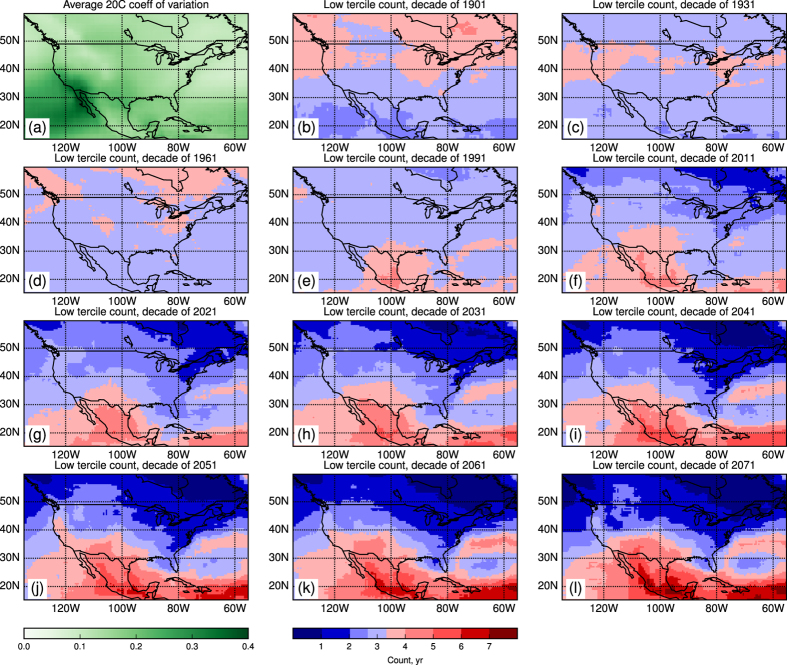|
13. Categorical representation of North American precipitation projections - PDF We explore use of the familiar tercile framework of seasonal forecasting for the characterization of 21st-century precipitation projections over North America. Consistent with direct analyses of modeled precipitation change, in a superensemble of CMIP5 simulations an unambiguous pattern of shifted tercile population statistics develops as the globe warms. Expressed categorically, frequencies for the low (i.e., dry) tercile increase in the southwestern United States and southward into Mexico and decrease across the northern tier of North America, while counts for the high tercile shift in the opposite sense.
We show that as the 21st-century proceeds, changes become statistically significant over wide regions in the pointwise sense, and also when considered as projections on model-specific climate change “fingerprints”. Background noise in the superensemble, against which significance is established, comprises both structural model uncertainty and natural climate variability. The robustness of these findings makes a compelling case for long-range planning for a dryer future in the American Southwest and southward, and wetter one to the north and especially northeast, while communication is facilitated by widespread user familiarity with the tercile format. REFERENCE
|
 EASM2: LINKING NEAR-TERM FUTURE CHANGES IN WEATHER AND HYDROCLIMATE IN WESTERN NORTH AMERICA TO ADAPTATION FOR ECOSYSTEM AND WATER MANAGEMENT EASM2: LINKING NEAR-TERM FUTURE CHANGES IN WEATHER AND HYDROCLIMATE IN WESTERN NORTH AMERICA TO ADAPTATION FOR ECOSYSTEM AND WATER MANAGEMENT | |
| Lamont-Doherty Earth Observatory of Columbia University 61 Route 9W Palisades, NY 10964
| |
|
| |
